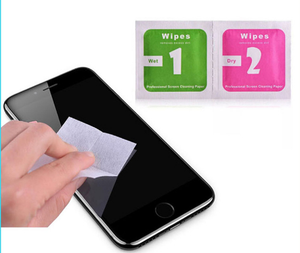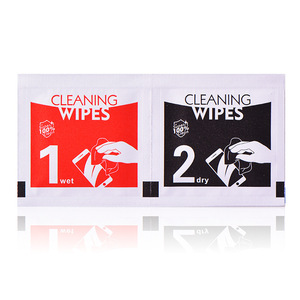
All categories
Featured selections
Trade Assurance
Buyer Central
Help Center
Get the app
Become a supplier

(836 products available)












































There are several types of cleaning alcohol for electronics. These range from pure isopropyl alcohol to custom-made formulations that incorporate other cleaning agents or surfactants. The alcohol concentrations typically range from 60% to 99%, depending on the use.
Isopropyl Alcohol
Isopropyl alcohol, often called IPA, is a popular choice for electronics cleaning due to its effectiveness and quick evaporation rate. It comes in various concentrations, with 70% to 99% being the most common. The 70% concentration is ideal for general cleaning purposes, as it allows longer surface contact to effectively sanitize and clean. In contrast, 99% isopropyl alcohol is highly desired for delicate electronics cleaning because of its low moisture content and fast drying.
Methylated Spirits
Methylated spirits, also known as denatured alcohol, are another type of cleaning alcohol. It consists of ethanol mixed with methanol and other substances that make it undrinkable. It is effective at removing dust, grime, and light oxidation, but its residue and slow evaporation make it less suited for sensitive electronics. However, it remains popular for cleaning larger electronic components (non-sensitive ones) or exterior surfaces.
Ethyl Alcohol
Ethyl alcohol, or ethanol, is a versatile cleaning agent used in various applications. While effective for cleaning purposes, it is not as common as isopropyl alcohol for electronics due to the regulatory challenges associated with its use. These include obtaining permits for possession and use. Ethyl alcohol is often found in pre-moistened wipes or sprays for cleaning medical devices, optical lenses, and some electronics where residue-free cleaning is critical.
Surfactant-Based Electronic Cleaners
These custom cleaning alcohol products, in which alcohol is mixed with surfactants, are intended to provide deeper cleaning action, especially on stubborn residues like grease or adhesives. While these formulations may leave a short-lived film, they are beneficial for heavy-duty cleaning before performing maintenance or repairs on electronic equipment. It is always important to ensure compatibility with sensitive components before using these products.
Custom-Blended Formulations
Custom blended electronic cleaning alcohols are tailored to specific industry needs. These formulations can incorporate dyes, anti-static agents, or specific surfactants based on buyer requirements. For instance, anti-static properties could be important in the semiconductor or data storage industry. These are mainly produced for large corporations and commercial users who have unique cleaning needs. Custom cleaning solutions not only help in effectively cleaning but also in prolonging the lifespan of critical electronic components.
Electricals, or more commonly called electronics, are very delicate gadgets that require very special cleaning measures. Using the wrong cleaning products on electronic devices can spell doom for the devices, as they may leave harmful residue, cause short circuits, or damage sensitive components. Below are what makes a cleaning alcohol safe for electronics.
High Purity and Low Residue
The main requirement for cleaning alcohols to be considered safe for electronics is having high purity. Products like isopropyl alcohol have high purity since they do not contain any extra additives, acetone, or methanol. These are additional cleaning agents that might be too harsh for electronics. In addition, these cleaning alcohols have a low residue content. This means that very little or no residue will be left behind on the surface of the electronic device after evaporation. This makes them great for cleaning things like circuit boards, computer components, and delicate optical equipment.
Fast Evaporation Rate
Cleaning alcohols that evaporate quickly are ideal for electronics. They help ensure that no moisture is left trapped in nooks and crannies where it could potentially cause short circuits or corrosion. This is especially vital for devices like smartphones, circuit boards, and connectors where even a small amount of residue can affect performance. It is also worth noting that 99% isopropyl alcohol has an exceptionally rapid evaporation rate, making it perfect for cleaning fragile electronic components with no threat to the components.
Non-Conductive and Non-Corrosive
An important quality of any electronic cleaning solvent is that it must not be conductive. This is because any electrical current passed through a cleaning solution will damage electronic components. ISKDA-approved electronic cleaning solvents have a very low conductivity, ensuring that they do not interfere with the operation of electronic devices during cleaning. Additionally, these solutions are also non-corrosive. This means they do not damage any electronic components, such as wires, circuit boards, or sensors.
Safe for Multiple Surfaces
Finally, cleaning alcohols are safe for several common surfaces that make up electronic devices. These include plastic housings, glass displays, and metal casings. Cleaners that are safe for these multiple surfaces are necessary to ensure that the device will not get damaged while trying to clean one particular part. This is especially essential for smartphones, laptops, and other consumer electronics that employ a mixture of plastic, glass, and metal in their construction. In addition, they must be free of acetone, vos, and heavy metals. These are damaging to the environment.
Choosing the right electronic cleaning alcohol means carefully considering factors such as purity, composition, and specific use cases. By assessing these criteria, one can select a cleaning solution that ensures optimal safety and effectiveness in maintaining electronic devices.
Purity and Composition
Electronic cleaning alcohols should be highly pure to avoid leaving any harmful residue on sensitive components. Isopropyl alcohol (IPA) stands out as a popular choice due to its superior purity and low residue upon evaporation. It is, therefore, a very effective cleaning solution for electronics because it does not leave anything that can potentially damage the delicate components. Avoiding alcohols mixed with methanol or other additives is critical, as these can corrode circuit boards and damage electronic components.
Concentration Level
When selecting electronic alcohol, the buyer must consider the concentration level based on the specific needs of the business. For general surface cleaning or disinfecting purposes, 70% concentration offers the ideal balance between effective cleaning and surface sanitization. However, for delicate operations like cleaning circuit boards, electronic parts, or precision instruments, 99% concentration is preferred due to its rapid evaporation rate and minimal residue. It is important to note that some devices may require specialized formulations or lower concentrations to avoid potential damage.
Eco-Friendly and Non-Hazardous Options
Electronic cleaning alcohol can still be environmentally friendly. Buyers may consider eco-friendly formulations that contain low-voc or water-based compounds to align with green initiatives. These options are often safer for users and reduce the ecological impact associated with traditional solvents while still delivering effective cleaning performance. Choosing a non-hazardous electronic cleaning alcohol can help reduce workplace conditions and comply with hazardous substance regulations.
Industry-Specific Requirements
In certain industries or businesses, the buyer will need to choose electronic cleaning alcohol based on particular requirements or standards. For example, in the medical or pharmaceutical industries, cleaning solutions must comply with stringent hygiene and safety standards. In these cases, alcohols like ethyl or medical-grade isopropyl alcohol are preferred. Similarly, businesses in the semiconductor or aerospace industries often require cleaning products with specific surface tension or evaporation rates to ensure optimal performance during maintenance.
There are several benefits to using cleaning alcohol on electronics. These benefits range from effectively eliminating residue and disinfecting surfaces to protecting and prolonging the life of the devices. Below are the key benefits.
Effective Removal of Contaminants
Electronic cleaning alcohols help remove various contaminants. These include dust, fingerprints, oils, and even some types of light adhesive residues. Whether they are for handheld gizmos like smartphones and tablets or for larger gaming and computing machines, cleaning alcohols are used to safely wipe and clean internal and external components. This is done without leaving behind any residue. Their evaporation leaves surfaces clean and prepared for optimal performance.
Sanitization and Disinfection
Sanitization and disinfection are extremely important for keeping devices clean and free from harmful bacteria and viruses. This is even more necessary for shared devices such as hospital equipment, computer keyboards, and other public-use gadgets. Alcohol-based cleaners can kill a wide range of pathogens in just a few seconds. This helps to ensure that not only are the devices clean but they are also sanitized and free from potentially harmful microorganisms that can affect health or hinder the performance of the device.
Non-Damaging to Sensitive Components
Cleaning alcohols provide an advantage in that they are non-conductive and will not gel or affect any of the internal components of a gadget. They are safe to use on circuit boards, connectors, and other delicate parts that can be affected by other harsher cleaning solutions. Also, premium cleaning alcohols have been specially formulated to ensure that they do not damage plastics, metals, or other materials used in electronic devices. Note that this is only true for the appropriate concentration. The wrong concentration can cause damage to electronics, too.
Residue-Free Cleaning
Cleaning alcohols are formulated to evaporate quickly, which means they leave no residue behind on the cleaned surfaces. This is particularly important for electronics, where any sticky leftover film can interfere with functionality, short-circuiting components, or affecting the device's performance. Pre-moistened electronic cleaning wipes containing isopropyl alcohol or other formulations ensure thorough, residue-free cleaning that leaves devices spotless and fully functional.
Maintenance of Device Functionality
Regular cleaning with electronic cleaning alcohol helps maintain the functionality and longevity of various devices. Whether it is computers, telecommunications equipment, or medical instruments, routine sanitizing not only enhances the visual appearance of the gadgets but also prevents overheating caused by dust buildup and lengthens the life of internal components. Moreover, clean surfaces ensure better connections and improved performance. This will help reduce replacement costs and downtime in professional settings where electronic devices are critical to daily operations.
Electricals should be cleaned with isopropyl alcohol or ethanol-based cleaning alcohol. Isopropyl alcohol is preferred for cleaning electronic things because it evaporates quickly and leaves no residue. Ethanol can also be used, but it must be of high purity and carefully prepared to guarantee it is safe for delicate components. Both kinds of cleaning alcohols are safe for circuit boards, computer components, and other sensitive electronic devices.
Although 70% rubbing alcohol will clean the surfaces of electronic devices, it is only appropriate for basic cleaning procedures, such as wiping the exterior of a device. For cleaning fragile interior components, such as circuit boards, a higher concentration of 99% is recommended since it dries faster and leaves even less moisture behind. To clean the external parts of electronic devices, 70% is effective at killing germs and removing smudges. However, for internal cleaning, stick to 99%.
Wipes soaked with 70% or 99% isopropyl alcohol are outstanding solutions for cleaning electrical devices. Pre-moistened electronic cleaning wipes available on the market are suitable for clearing phones, tablets, and TVs since they are free of acetone and guaranteed to do no harm to plastic, glass, or metal surfaces. If these aren't available, DIY wipes using lint-free cloths or microfiber towels infused with 99% isopropyl alcohol can thoroughly disinfect and leave no residue on circuit boards and external surfaces.
ISOPROPYL alcohol is the primary component of both electronic cleaning alcohol and ordinary rubbing alcohol. The only difference is that the former is specially formulated to ensure maximum purity and optimal concentration for cleaning electronic devices without causing harm, whereas the latter may contain additives or lower concentrations intended for medical or skin care use.
In essence, cleaning alcohol for electronics is a crucial solution for safely maintaining the performance and longevity of various devices. With types ranging from isopropyl and methylated spirits to custom formulations, each is tailored to address specific needs. Buyers can make a more informed purchase by considering the cleaning alcohol type, effectiveness, and eco-friendly options.